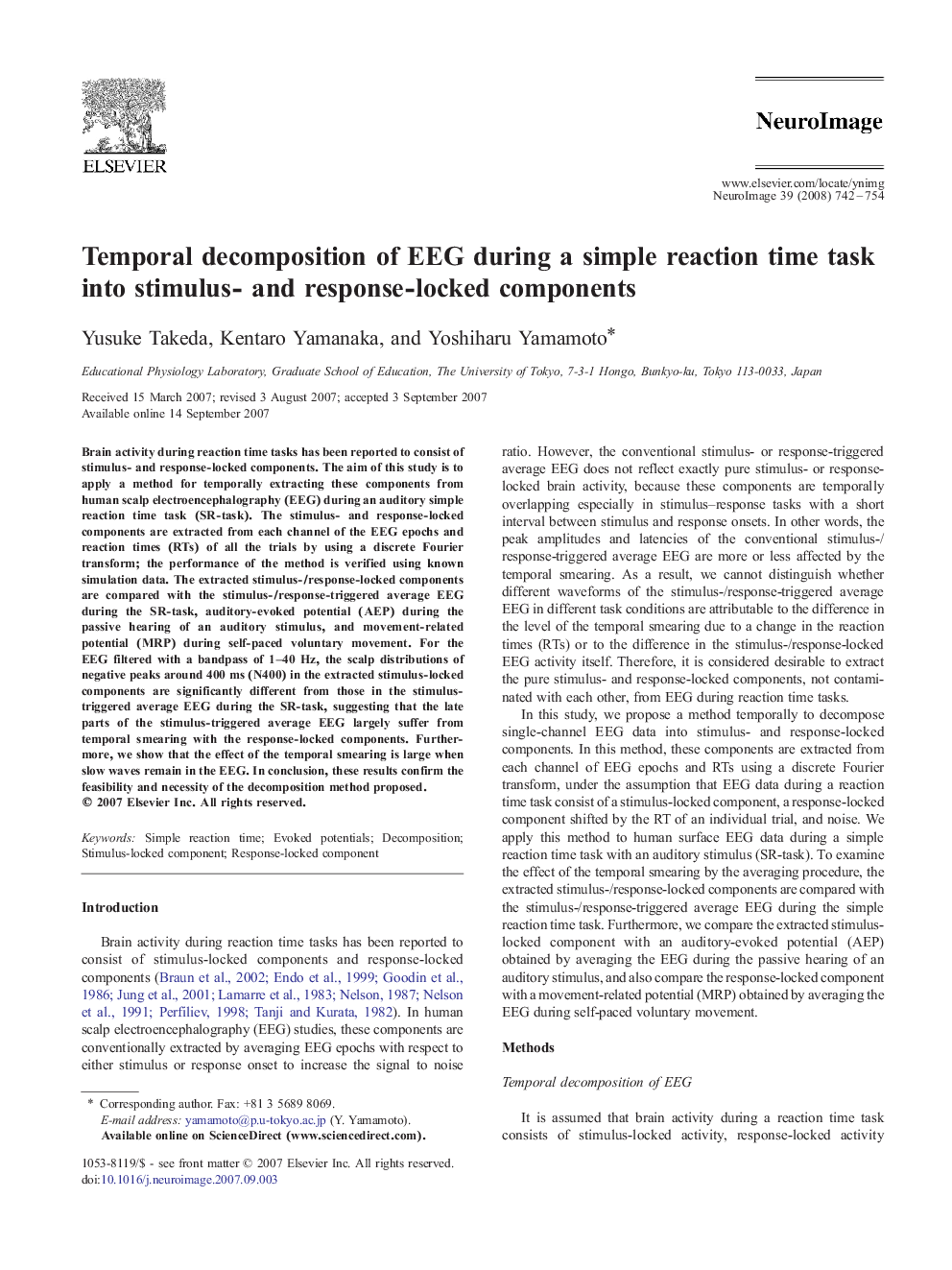| کد مقاله | کد نشریه | سال انتشار | مقاله انگلیسی | نسخه تمام متن |
|---|---|---|---|---|
| 3073271 | 1188828 | 2008 | 13 صفحه PDF | دانلود رایگان |

Brain activity during reaction time tasks has been reported to consist of stimulus- and response-locked components. The aim of this study is to apply a method for temporally extracting these components from human scalp electroencephalography (EEG) during an auditory simple reaction time task (SR-task). The stimulus- and response-locked components are extracted from each channel of the EEG epochs and reaction times (RTs) of all the trials by using a discrete Fourier transform; the performance of the method is verified using known simulation data. The extracted stimulus-/response-locked components are compared with the stimulus-/response-triggered average EEG during the SR-task, auditory-evoked potential (AEP) during the passive hearing of an auditory stimulus, and movement-related potential (MRP) during self-paced voluntary movement. For the EEG filtered with a bandpass of 1–40 Hz, the scalp distributions of negative peaks around 400 ms (N400) in the extracted stimulus-locked components are significantly different from those in the stimulus-triggered average EEG during the SR-task, suggesting that the late parts of the stimulus-triggered average EEG largely suffer from temporal smearing with the response-locked components. Furthermore, we show that the effect of the temporal smearing is large when slow waves remain in the EEG. In conclusion, these results confirm the feasibility and necessity of the decomposition method proposed.
Journal: NeuroImage - Volume 39, Issue 2, 15 January 2008, Pages 742–754